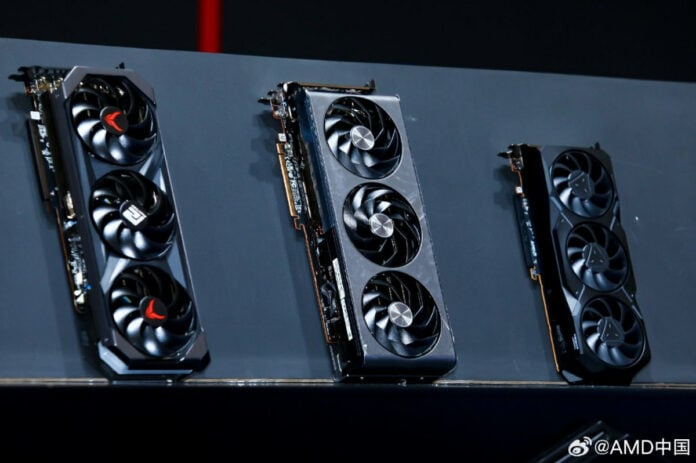After an informal unveiling at ChinaJoy 2023, AMD has officially launched the Radeon RX 7900 GRE 16GB GPU. Currently exclusive to China, the GPU is being pushed by three AIBs, including Sapphire, PowerColor, and XFX, with AMD confirmed to produce a reference model. Of note, the official slides reveal US MSRP of $649 and AMD China confirms the GPU will launch globally through system integrators. Curiosity piqued.
Another plus is that Chinese media outlets (via Wccftech) have begun pushing out reviews, giving us curious cats a full breakdown of what’s inside. However, as you will see in due course, its graphical prowess and pricing confirms speculation the card is aimed squarely at hitting the current pricing gap that’s occupied by Nvidia GeForce RTX 4070 Series GPUs.
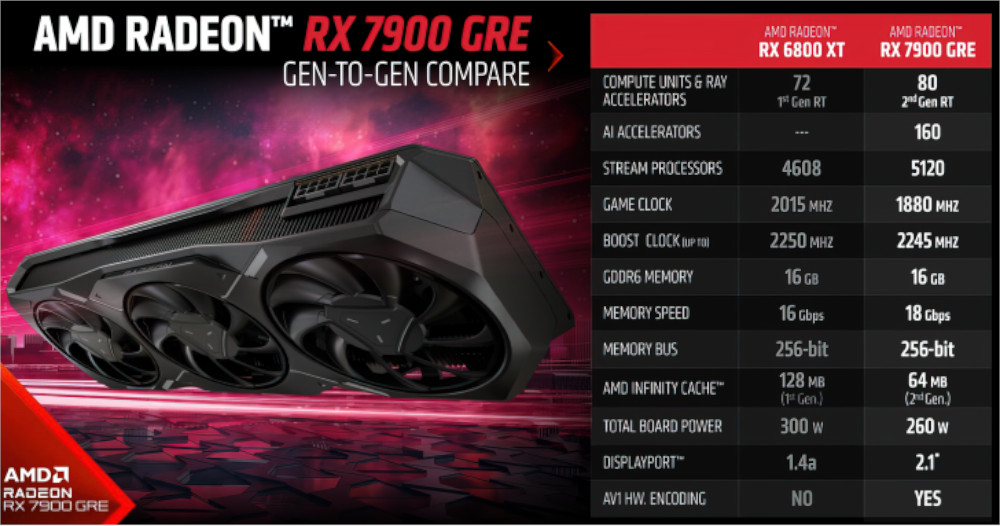
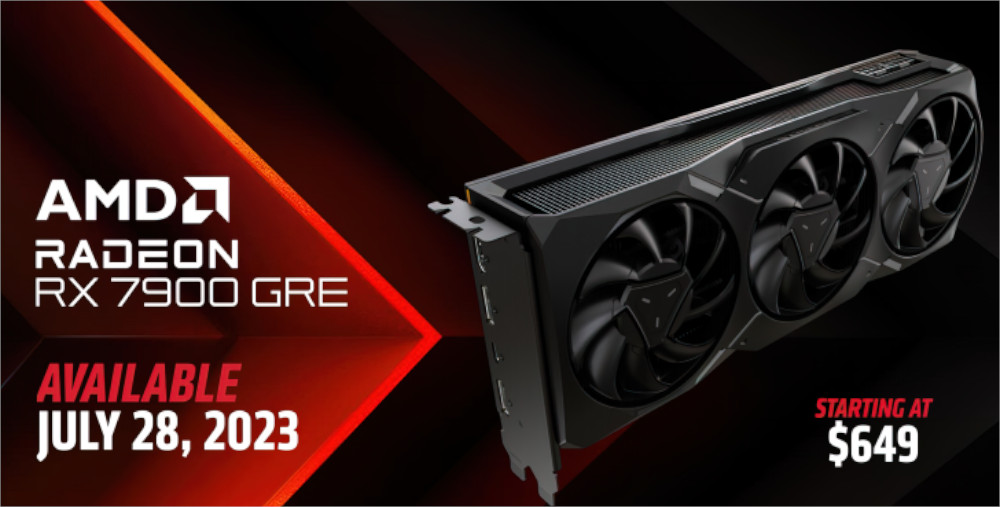
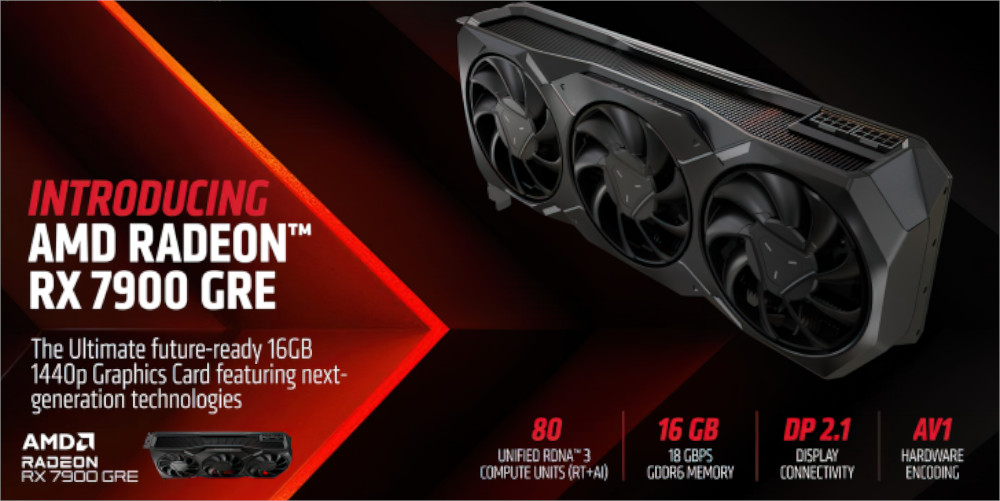
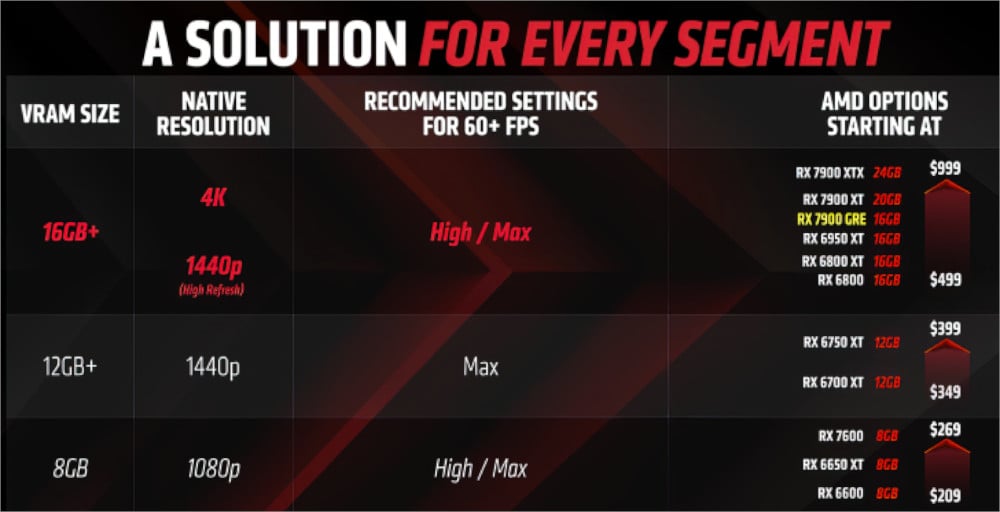
Interesting GPU
First off, although it was initially rumoured to consist of a full-fat Navi 31 GPU like the one found in the Radeon RX 7900 XT, this card comes with reduced specifications, featuring a slightly cut-down version offering 80 compute units, 5,120 stream processor cores, and a reduced 16GB of GDDR6 memory with a 256-bit memory bus compared to the 20GB VRAM and larger 320-bit bus found in its larger sibling. Memory has also been down-clocked to 18Gbps, with a resultant bandwidth of 576GB/s.
Furthermore, the card features noticeably lower clock speeds with a base clock of 1,270MHz, a game clock of 1,880MHz, and boost clock speeds at 2,245MHz, compared with the RX 7900 XT’s 1,385MHz / 2,025MHz/ 2,400MHz frequencies. Rounding off, Infinity Cache has also been reduced from 80MB to 64MB, as well, and the GPU carries a TBP of 260W.
| Radeon | RX 7900 XT | RX 7900 GRE | RX 6950 XT | RX 6800 XT |
|---|---|---|---|---|
| Launch date | Dec 2022 | July 2023 | May 2022 | Nov 2020 |
| Codename | Navi 31 | Navi 31 | Navi 21 | Navi 21 |
| Architecture | RDNA 3 | RDNA 3 | RDNA 2 | RDNA 2 |
| Process (nm) | 5/6 | 5/6 | 7 | 7 |
| Transistors (bn) | 57.7 | 57.7 | 26.8 | 26.8 |
| Die size (mm2) | 522 | 522 | 520 | 520 |
| Compute Units | 84 of 96 | 80 of 96 | 80 of 80 | 72 of 80 |
| ALUs | 5,376 | 5,120 | 5,120 | 4,608 |
| Boost clock (MHz) | 2,400 | 2,245 | 2,310 | 2,250 |
| Peak FP32 TFLOPS | 51.61 | 45.98 | 23.65 | 20.74 |
| RT cores | 84 | 80 | 80 | 72 |
| AI cores | 168 | 160 | – | – |
| ROPs | 192 | 192 | 128 | 128 |
| Infinity Cache (MB) | 80 | 64 | 128 | 128 |
| Memory size (GB) | 20 | 16 | 16 | 16 |
| Memory type | GDDR6 | GDDR6 | GDDR6 | GDDR6X |
| Memory bus (bits) | 320 | 256 | 256 | 256 |
| Memory clock (Gbps) | 20 | 18 | 18 | 16 |
| Bandwidth (GB/s) | 800 | 576 | 576 | 512 |
| Power (watts) | 315 | 260 | 335 | 300 |
| Launch MSRP ($) | 899 | 649 | 1,099 | 649 |
In terms of real-world performance, this speculatively places Radeon RX 7900 GRE below the Radeon RX 7900 XT, and higher than Nvidia’s RTX 4070, at least for rasterisation titles. So basically, raw performance is on par with the similarly priced Radeon RX 6950 XT from AMD’s previous generation, except this is a newer card with the latest RDNA 3 GPU and AMD’s 2nd Gen RT cores.
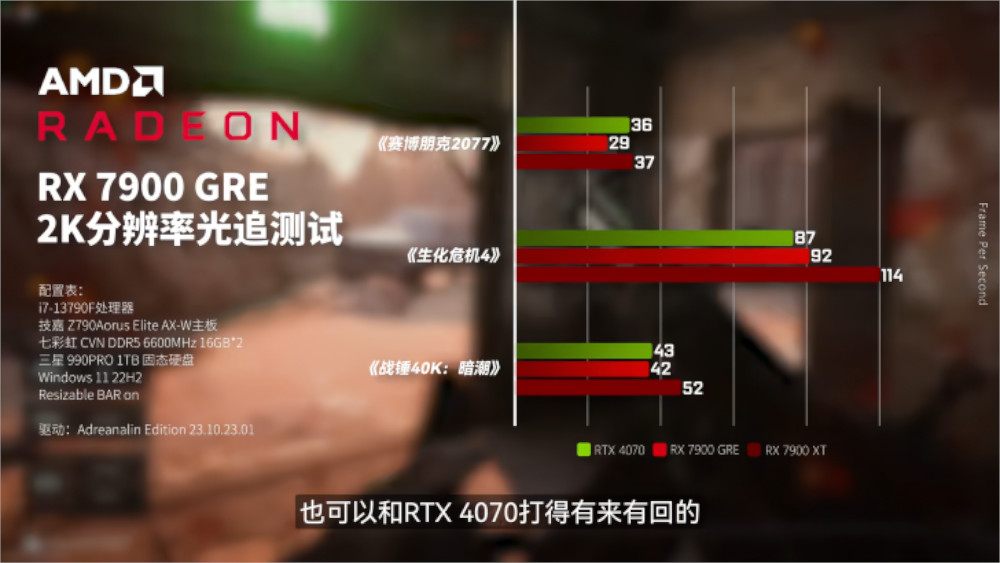
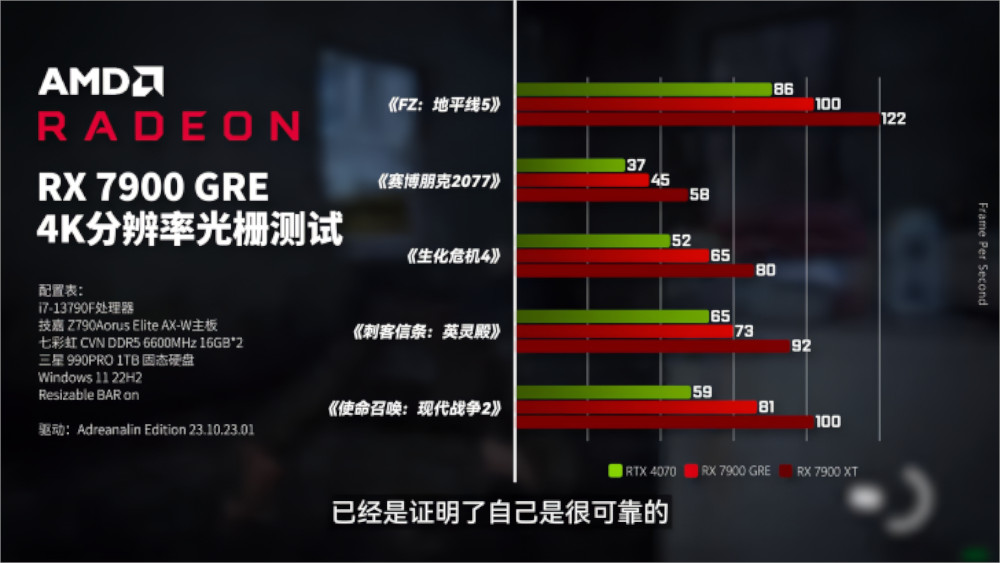
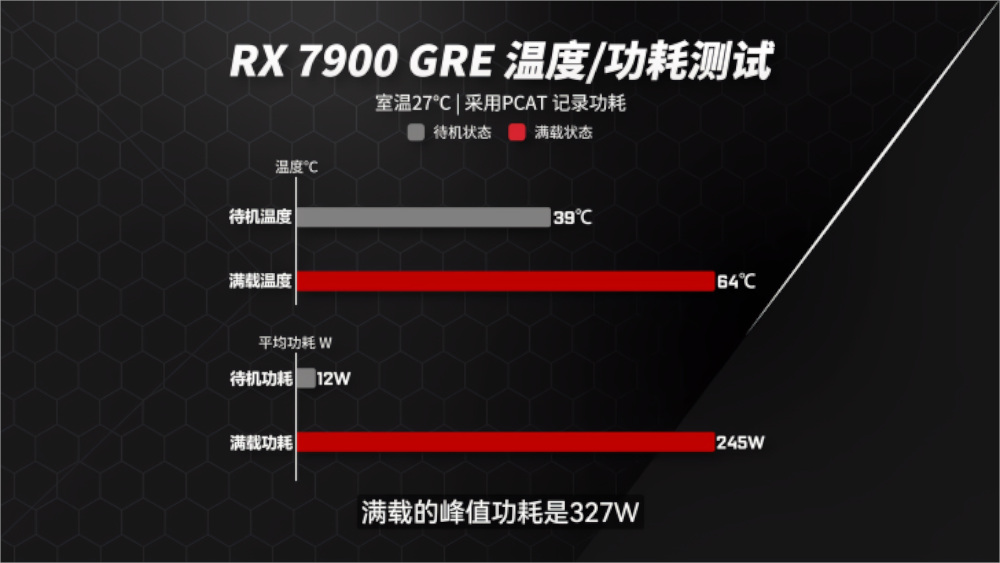
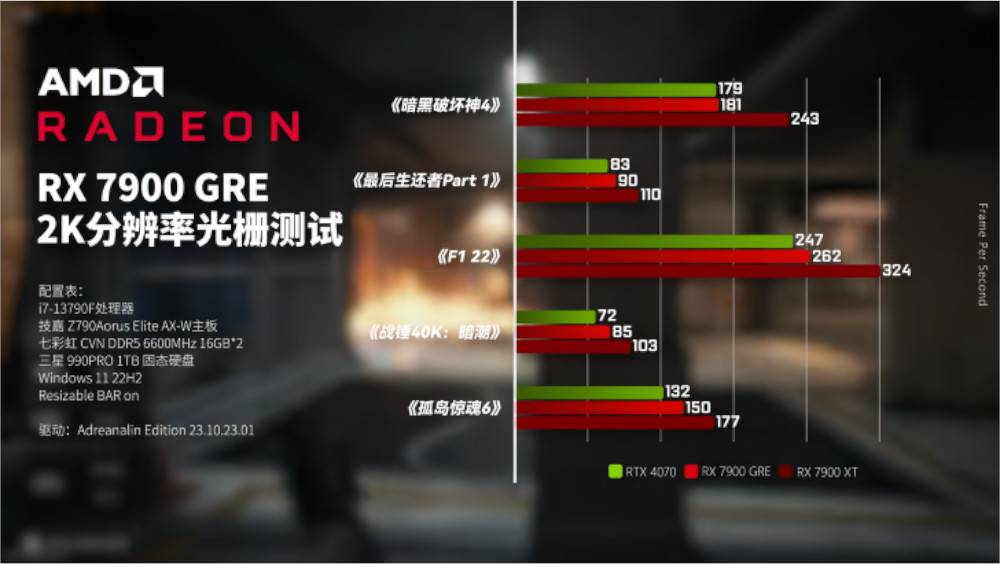
Of note, AMD does market the card as a successor to the Radeon RX 6800 XT, begging the question: where does this place the rumoured and upcoming Radeon RX 7800 XT? Gee whillikers, Batman! AMD’s marketing department confuses yet again.


